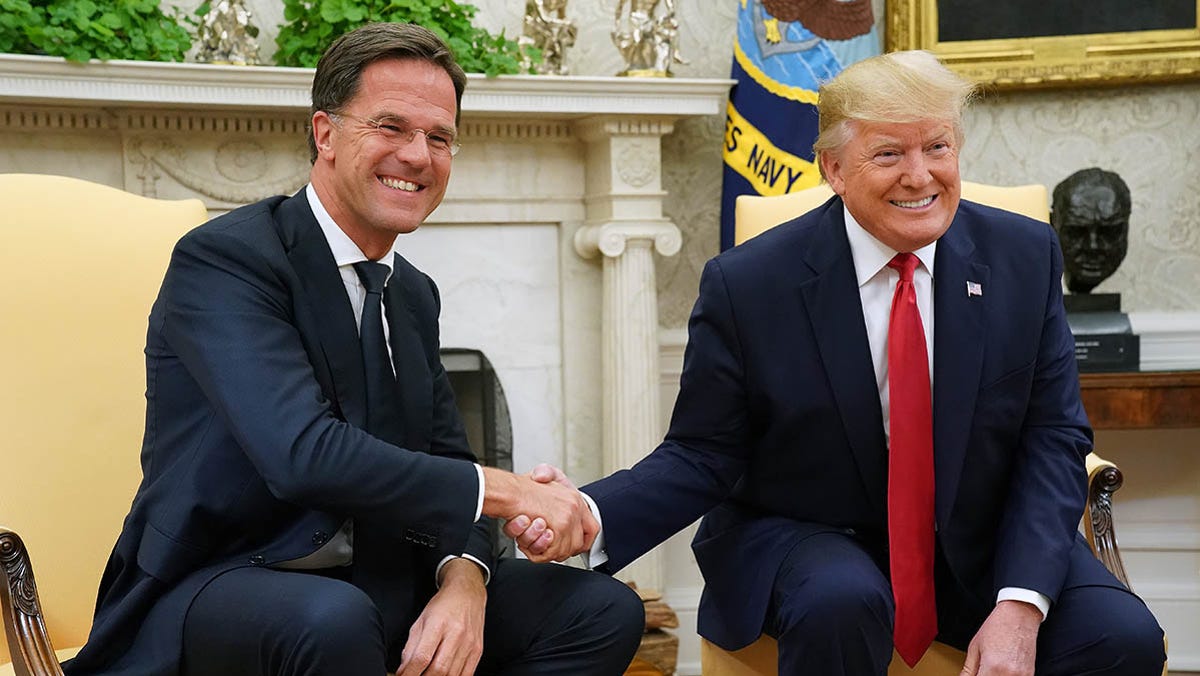Zelenskyy said he is willing to step down to join NATO, blasts Trump
Ukrainian President Zelenskyy said he would step down if it meant Ukraine could join NATO. He also blasted Trump’s mineral reserves proposal.
WASHINGTON − The new head of NATO and President Donald Trump agree on one thing: European member states should be paying more for their defense.
Seated next to Trump in the Oval Office on Thursday, NATO Secretary General Mark Rutte, a former prime minister of the Netherlands, credited the president with making NATO members contribute more for military support.
“If we look at Trump 47, what happened in the last couple of weeks is really staggering,” Rutte said of recent defense commitments. “The Europeans countries are spending a package of $800 billion on defense spending.”
Rutte then nodded along as Trump recalled demanding that NATO nations pay up their fair share during his first term as president.
“When I first went to NATO, my first meeting, I noticed that very few people were paying, and if they were, they weren’t paying their fair share,” Trump said.
After making it clear that U.S. wouldn’t support NATO if member states didn’t step up, “the money started pouring in,” Trump said.
Rutte’s visit to the White House comes as Russia is considering a ceasefire deal agreed to by Ukraine, three years after it invaded the country.

Russia ‘ready to discuss’ but has reservations about ceasefire deal
U.S. officials arrived in Moscow discuss the proposed 30-day pause in fighting between Ukraine and Russia, but Russia is wary of the deal.
“Now we have to use it wisely,” Trump said of Europe’s defense spending, “and we have to get this war over with that, you’ll be back to a normal, much more normal life.”
Ukrainian President Volodymyr Zelenskyy has said that he would be willing to step down if Ukraine were granted membership in NATO, but Trump officials including Defense Secretary Pete Hegseth have said Ukraine won’t be joining the military alliance. Russia staunchly opposes the move, which it sees as an eastward expansion of NATO.
Trump has repeatedly expressed his contention that European countries are taking advantage of the U.S. defense umbrella and should be paying more than double what they currently are required to pay for their military defense.
In 2014, NATO members committed to spending 2% of their Gross Domestic Product or economic output in the wake of Russia’s annexation of Ukraine’s Crimea region.
The U.S. contributes 3.4% of its GDP and about 16% of NATO’s annual budget. Poland is in top place, contributing 4.1% of its GDP, followed by Estonia and the U.S, both at 3.4%, according to the Council on Foreign Relations.
By 2024, all non-U.S. NATO allies spent the 2% target on average for the first time. Twenty-three out of the 32 total member countries will meet or exceed the 2% target, including France and Germany, according to the Council on Foreign Relations.
“They could all afford it, but they should be at 5%, not 2%,” said Trump said in January.
Last month, the U.K., which currently spends 2.3% of its GDP, pledged to increase its defense outlay to 2.5% by 2027.
During a speech to NATO members in December Rutte said the 2% commitment was not enough.
“I can tell you, we are going to need a lot more than 2%,” he said. “If we don’t spend more together now to prevent war, we will pay a much, much, much higher price later to fight it.”
Swapna Venugopal Ramaswamy is a White House Correspondent for USA TODAY. You can follow her on X @SwapnaVenugopal
